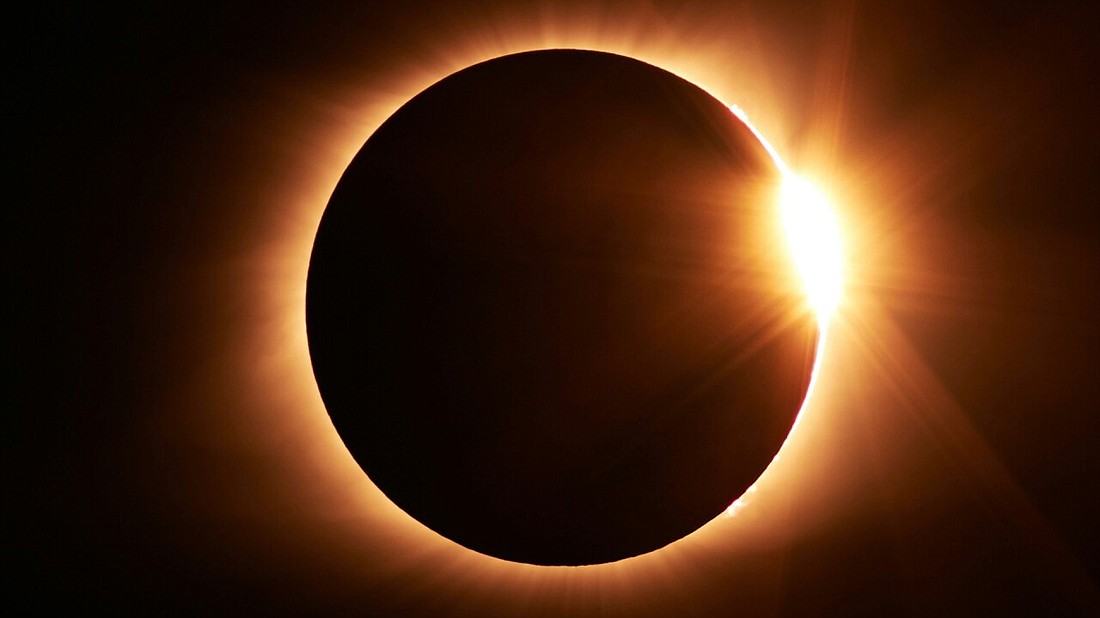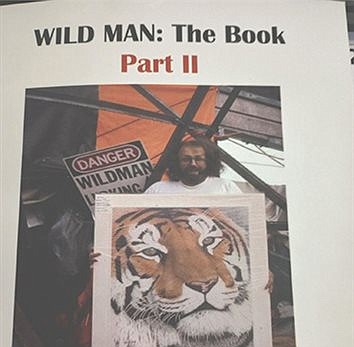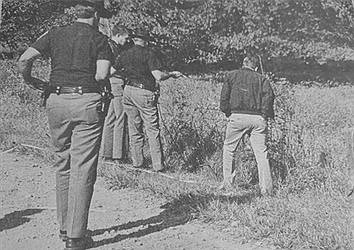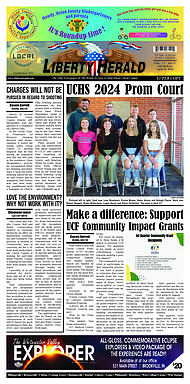Preparing for the 2024 Total Solar Eclipse
March 28, 2024 at 11:18 a.m.

On April 8, 2024, all areas of Indiana will see at least a partial eclipse. However, only places within the 115-mile-wide path of totality will plunge into complete darkness. As excitement and interest grow, local communities and public safety partners are planning for the influx of visitors to the state. Brookville is within the path of totality and will experience totality for 3 minutes and 4 seconds. The community has been inundated with recommendations for preparing for the event. But what exactly are we preparing for?
Traffic
“The rare eclipse was memorable. The ride home was something they want to forget.” - Lexington Herald-Leader in Kentucky, Aug. 22, 2017.
TR News is a bimonthly news magazine featuring timely articles on innovative and state-of-the-art research and practice in all modes of transportation. An article by John UpChurch called “Total Solar Eclipse on Aug. 21, 2017: Special Event with Coast-to-Coast Traffic Congestion” discusses how traffic was impacted in towns and cities in the path of totality. Upchurch is a transportation engineering consultant based in Ivins, Utah, and Professor Emeritus at Arizona State University, Tempe.
Aug. 21, 2017, last Total Solar Eclipse
The path of totality for the Aug. 21, 2017, total solar eclipse in the United States started from the Pacific Ocean and passed through the states of Oregon, Idaho, Montana, Wyoming, Nebraska, Kansas, Iowa, Missouri, Illinois, Kentucky, Tennessee, Georgia, North Carolina, and finally South Carolina, before exiting into the Atlantic Ocean. It was the first total solar eclipse visible in the mainland United States in 38 years. It is a very rare event, and most agencies had no prior experience in planning for it. When considering the 2017 data, it should be noted that the majority of the path of totality was free from clouds on the day of the eclipse.
Upchurch was aware another total solar eclipse was scheduled to occur only six years later on April 8, 2024. Therefore, he shared lessons learned regarding traffic during the 2017 event.
•Huge numbers of viewers traveled to the path of totality. The best estimate is that at least 5 million people traveled.
•Almost all viewers traveled to the path of totality by motor vehicle.
•The eclipse occurred on a Monday, and travel to the path of totality was spread over multiple days.
•Roadways experienced very little traffic congestion on the days leading up to totality.
•Although arrivals spread over multiple days, a large majority of eclipse watchers departed the same day. A major, immediate, post-eclipse exodus on Monday created traffic congestion on roadways leading away from the path of totality all across the United States.
•On some Interstate routes, traffic congestion, slow speeds, and long travel times lingered for up to 13 hours after totality. Rural, nonfreeway routes also experienced significant traffic congestion, slow speeds, and long travel times.
What does Indiana expect when it comes to traffic?
The Indiana Department of Natural Resources (IDNR) states, “Traffic will increase immediately following the eclipse, and it may be gridlocked for hours. Ensure you have plenty of gas and a fully stocked vehicle emergency kit, including a first aid kit, jumper cables, portable phone charger and spare food and water.”
Other things noted:
Traffic patterns will be different, as thousands of people will be traveling to and from the path of totality. This includes traffic in rural areas that usually do not have heavy traffic.
Public facilities may become crowded or unavailable.
Some areas may experience difficulties keeping up with consumer demand, such as having enough food and gas, in the short term.
Find an area away from roads. Do not stop in the road or park along a road. This can be extremely dangerous, especially on highways and interstates.
Influx of visitors: Hopkinsville, Kentucky popular destination during 2017 total solar eclipse
Hopkinsville, Kentucky (population 30,683) was a popular destination to view the total solar eclipse as Hopkinsville held several events centered around the phenomen. The city prepared for roughly 100,000 visitors. Officials later reported the eclipse brought 116,000 people to the area and had a $28.5 million dollar impact. Franklin County is estimating approximately 50,000 visitors.
State estimations then and now
The State of Kentucky estimated up to 500,000 guests during the 2017 eclipse. There were approximately 300,000.
Indiana estimates the same as Kentucky did in 2017, with half a million visitors, which would boost the state’s population by nearly 10%.
Will cell phone service be lost?
In a statement on their website, AT&T states, ‘We understand the importance of keeping our customers connected, and we continue to monitor our network around the clock. The eclipse itself will have no direct operational impact on our wireless network.” Since the 2017 eclipse, the company has expanded its network and bandwidth.
Verizon spokesperson Jeff Kew said, “We’re making sure the network is good to go, and it is. We feel really good about the capacity we’re going to handle with the influx of people.”
Latest News
E-Editions
Events
On April 8, 2024, all areas of Indiana will see at least a partial eclipse. However, only places within the 115-mile-wide path of totality will plunge into complete darkness. As excitement and interest grow, local communities and public safety partners are planning for the influx of visitors to the state. Brookville is within the path of totality and will experience totality for 3 minutes and 4 seconds. The community has been inundated with recommendations for preparing for the event. But what exactly are we preparing for?
Traffic
“The rare eclipse was memorable. The ride home was something they want to forget.” - Lexington Herald-Leader in Kentucky, Aug. 22, 2017.
TR News is a bimonthly news magazine featuring timely articles on innovative and state-of-the-art research and practice in all modes of transportation. An article by John UpChurch called “Total Solar Eclipse on Aug. 21, 2017: Special Event with Coast-to-Coast Traffic Congestion” discusses how traffic was impacted in towns and cities in the path of totality. Upchurch is a transportation engineering consultant based in Ivins, Utah, and Professor Emeritus at Arizona State University, Tempe.
Aug. 21, 2017, last Total Solar Eclipse
The path of totality for the Aug. 21, 2017, total solar eclipse in the United States started from the Pacific Ocean and passed through the states of Oregon, Idaho, Montana, Wyoming, Nebraska, Kansas, Iowa, Missouri, Illinois, Kentucky, Tennessee, Georgia, North Carolina, and finally South Carolina, before exiting into the Atlantic Ocean. It was the first total solar eclipse visible in the mainland United States in 38 years. It is a very rare event, and most agencies had no prior experience in planning for it. When considering the 2017 data, it should be noted that the majority of the path of totality was free from clouds on the day of the eclipse.
Upchurch was aware another total solar eclipse was scheduled to occur only six years later on April 8, 2024. Therefore, he shared lessons learned regarding traffic during the 2017 event.
•Huge numbers of viewers traveled to the path of totality. The best estimate is that at least 5 million people traveled.
•Almost all viewers traveled to the path of totality by motor vehicle.
•The eclipse occurred on a Monday, and travel to the path of totality was spread over multiple days.
•Roadways experienced very little traffic congestion on the days leading up to totality.
•Although arrivals spread over multiple days, a large majority of eclipse watchers departed the same day. A major, immediate, post-eclipse exodus on Monday created traffic congestion on roadways leading away from the path of totality all across the United States.
•On some Interstate routes, traffic congestion, slow speeds, and long travel times lingered for up to 13 hours after totality. Rural, nonfreeway routes also experienced significant traffic congestion, slow speeds, and long travel times.
What does Indiana expect when it comes to traffic?
The Indiana Department of Natural Resources (IDNR) states, “Traffic will increase immediately following the eclipse, and it may be gridlocked for hours. Ensure you have plenty of gas and a fully stocked vehicle emergency kit, including a first aid kit, jumper cables, portable phone charger and spare food and water.”
Other things noted:
Traffic patterns will be different, as thousands of people will be traveling to and from the path of totality. This includes traffic in rural areas that usually do not have heavy traffic.
Public facilities may become crowded or unavailable.
Some areas may experience difficulties keeping up with consumer demand, such as having enough food and gas, in the short term.
Find an area away from roads. Do not stop in the road or park along a road. This can be extremely dangerous, especially on highways and interstates.
Influx of visitors: Hopkinsville, Kentucky popular destination during 2017 total solar eclipse
Hopkinsville, Kentucky (population 30,683) was a popular destination to view the total solar eclipse as Hopkinsville held several events centered around the phenomen. The city prepared for roughly 100,000 visitors. Officials later reported the eclipse brought 116,000 people to the area and had a $28.5 million dollar impact. Franklin County is estimating approximately 50,000 visitors.
State estimations then and now
The State of Kentucky estimated up to 500,000 guests during the 2017 eclipse. There were approximately 300,000.
Indiana estimates the same as Kentucky did in 2017, with half a million visitors, which would boost the state’s population by nearly 10%.
Will cell phone service be lost?
In a statement on their website, AT&T states, ‘We understand the importance of keeping our customers connected, and we continue to monitor our network around the clock. The eclipse itself will have no direct operational impact on our wireless network.” Since the 2017 eclipse, the company has expanded its network and bandwidth.
Verizon spokesperson Jeff Kew said, “We’re making sure the network is good to go, and it is. We feel really good about the capacity we’re going to handle with the influx of people.”





